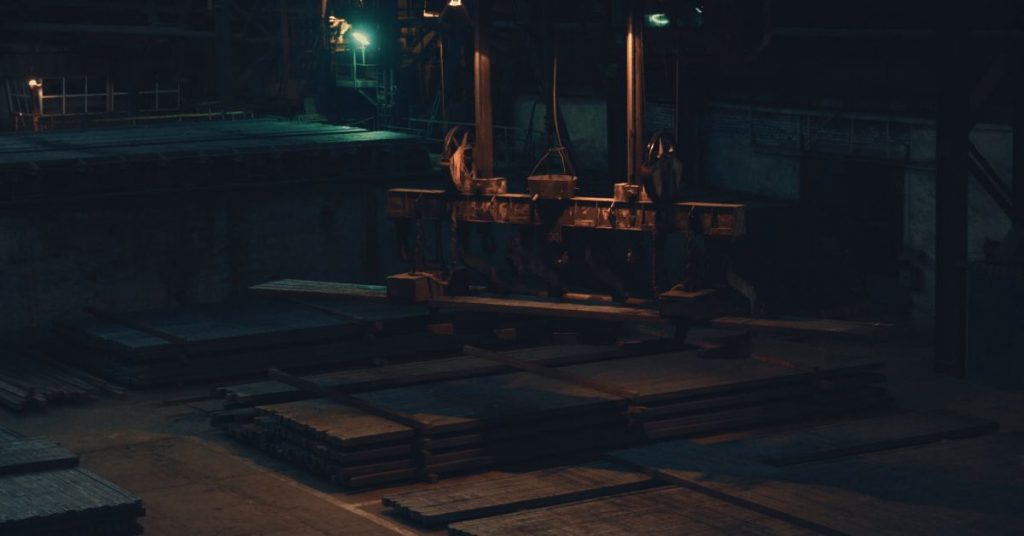Suspended magnets are widely used in material handling systems to ensure the efficient separation of ferrous contaminants from bulk materials. These magnets play a crucial role in preventing damage to equipment, improving product quality, and ensuring safety in industries such as recycling, mining, and manufacturing. In this article, we’ll explore the function and advantages of suspended magnetic separators and how they contribute to a more efficient and safer work environment.
What Are Suspended Magnets?

A suspended magnetic separator is a type of magnet that is suspended above a conveyor belt or material flow to attract and remove ferrous particles from the product stream. These magnets are typically used in applications where there is a need to remove metal contaminants, such as nails, screws, or other ferrous metals, from bulk materials. Suspended magnets are crucial in preventing these contaminants from damaging machinery or affecting the quality of the final product.
How Do Suspended Magnets Work?
Suspended magnets work by using a powerful magnetic field to attract ferrous metals that pass underneath the magnet. The magnetic field is generated by an electromagnetic coil or a permanent magnet. As the material moves along the conveyor belt or material stream, the suspended magnet attracts ferrous contaminants, which are then removed and discarded, while the non-magnetic material continues its path.
These magnets are usually positioned above the material flow in such a way that they can easily capture ferrous objects without interfering with the movement of the bulk material. The use of suspended magnets allows for continuous operation, making them ideal for high-volume material handling applications.
Applications of Suspended Magnets
- Recycling Industry
Suspended magnets are widely used in the recycling industry to separate metal contaminants from recyclables like plastics, paper, and wood. These magnets help to improve the quality of the recyclables by ensuring that no metal particles contaminate the materials, which can reduce their value. - Mining Operations
In mining, suspended magnetic separators are used to separate ferrous contaminants from ores. These contaminants can include iron and steel particles, which are removed from the ore to ensure that the materials are processed efficiently and safely. Mining magnets also help prevent damage to equipment such as crushers, mills, and conveyors. - Material Handling and Bulk Processing
In material handling systems, suspended magnets are used to separate ferrous metals from bulk materials such as grains, powders, and aggregates. This helps to protect machinery like mills, grinders, and conveyor belts from metal wear and tear, which can lead to costly repairs and downtime. - Food Processing
In the food processing industry, ensuring that the final product is free from metal contamination is essential for safety and quality. Suspended magnets are used to remove ferrous particles from food products, preventing contamination and improving food safety. - Cement and Construction Industries
In cement and construction industries, suspended magnets are used to separate metals from aggregates. This helps prevent damage to crushing and grinding equipment, as well as ensuring the purity of the final product.
Types of Suspended Magnets
- Electromagnetic Suspended Magnets
Electromagnetic suspended magnetic separators use an electromagnetic coil to create a magnetic field. These magnets are ideal for high-intensity applications and can be turned on or off depending on the need. Electromagnetic suspended magnets are highly effective at removing even small metal particles from a wide variety of materials. - Permanent Suspended Magnets
Permanent suspended magnetic separators use a permanent magnet to generate the magnetic field. They do not require an external power source to operate, making them a more energy-efficient solution for continuous applications. Permanent magnets are typically used in less demanding applications where high-intensity magnetic fields are not necessary. - Self-Cleaning Suspended Magnets
Self-cleaning suspended magnetic separators are equipped with a system that automatically removes the collected ferrous material from the magnet, ensuring continuous operation without the need for manual intervention. These magnets are ideal for high-volume applications where constant cleaning is necessary.
Benefits of Suspended Magnets
- Protection for Equipment
One of the primary benefits of suspended magnets is their ability to protect equipment from metal contamination. Ferrous materials can cause significant damage to crushers, grinders, mills, and conveyor belts. By using suspended magnets to remove these contaminants, industries can prevent costly repairs and minimize downtime. - Improved Product Quality
Suspended magnets help ensure that products are free from metal contamination, improving the overall quality of the product. This is particularly important in industries such as food processing, where metal contamination can pose serious health risks to consumers. - Increased Efficiency
By automating the process of metal removal, suspended magnets help increase the efficiency of production lines. These magnets are designed to operate continuously without the need for manual intervention, reducing labor costs and allowing businesses to focus on other aspects of their operations. - Environmentally Friendly
Suspended magnets help improve recycling efforts by separating ferrous materials from recyclable products. This contributes to more effective recycling programs, reducing the need for raw material extraction and helping industries operate in an environmentally responsible manner. - Low Maintenance
Suspended magnets are relatively low maintenance, especially permanent magnets, which do not require an external power source. Self-cleaning models also reduce the need for frequent manual cleaning, making them ideal for continuous operations.
Conclusion
Suspended magnetic separators are essential tools in various industries for ensuring that ferrous contaminants are removed from bulk materials. From recycling and mining to food processing and material handling, these magnets provide efficient, cost-effective solutions for improving product quality, protecting equipment, and enhancing safety. Whether using permanent, electromagnetic, or self-cleaning models, suspended magnets offer a reliable and environmentally friendly way to keep materials free from harmful contaminants and improve the overall efficiency of industrial operations.